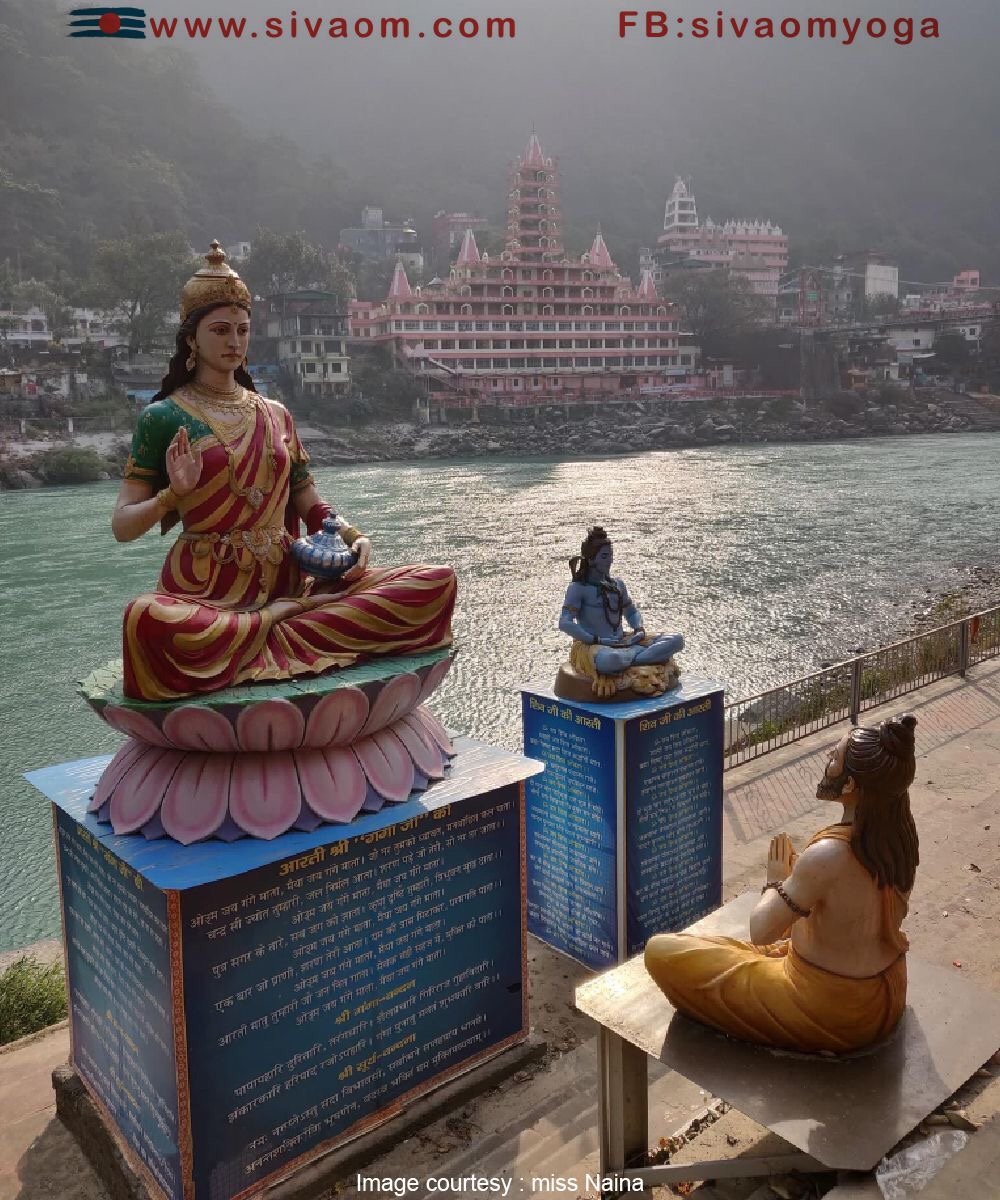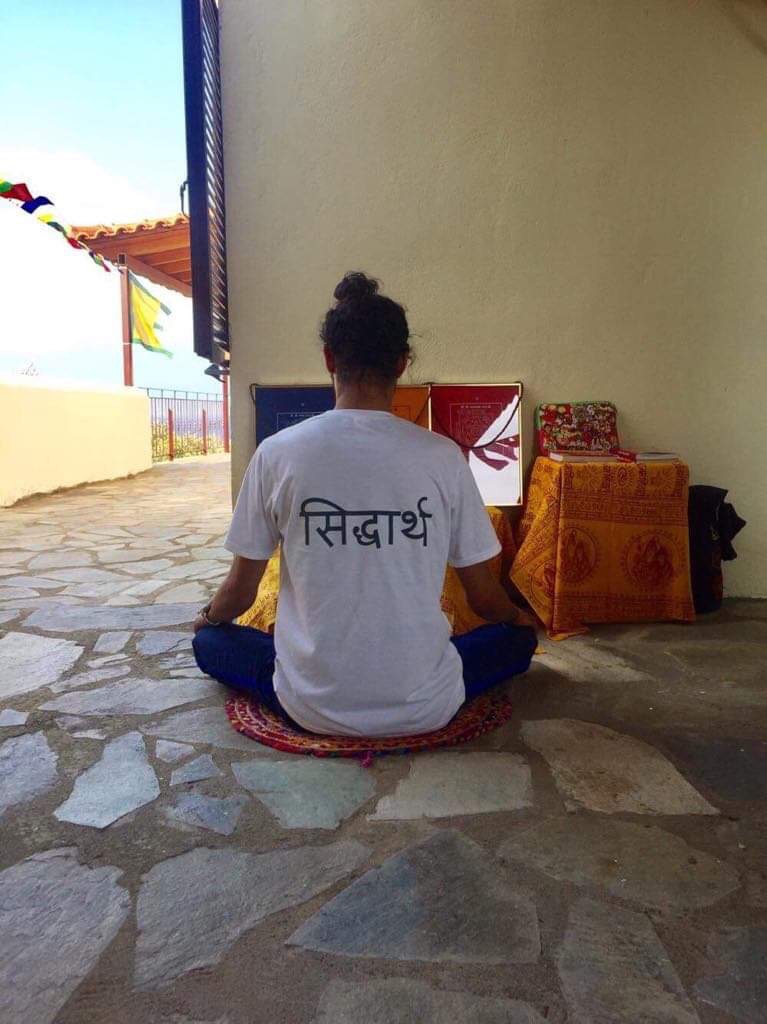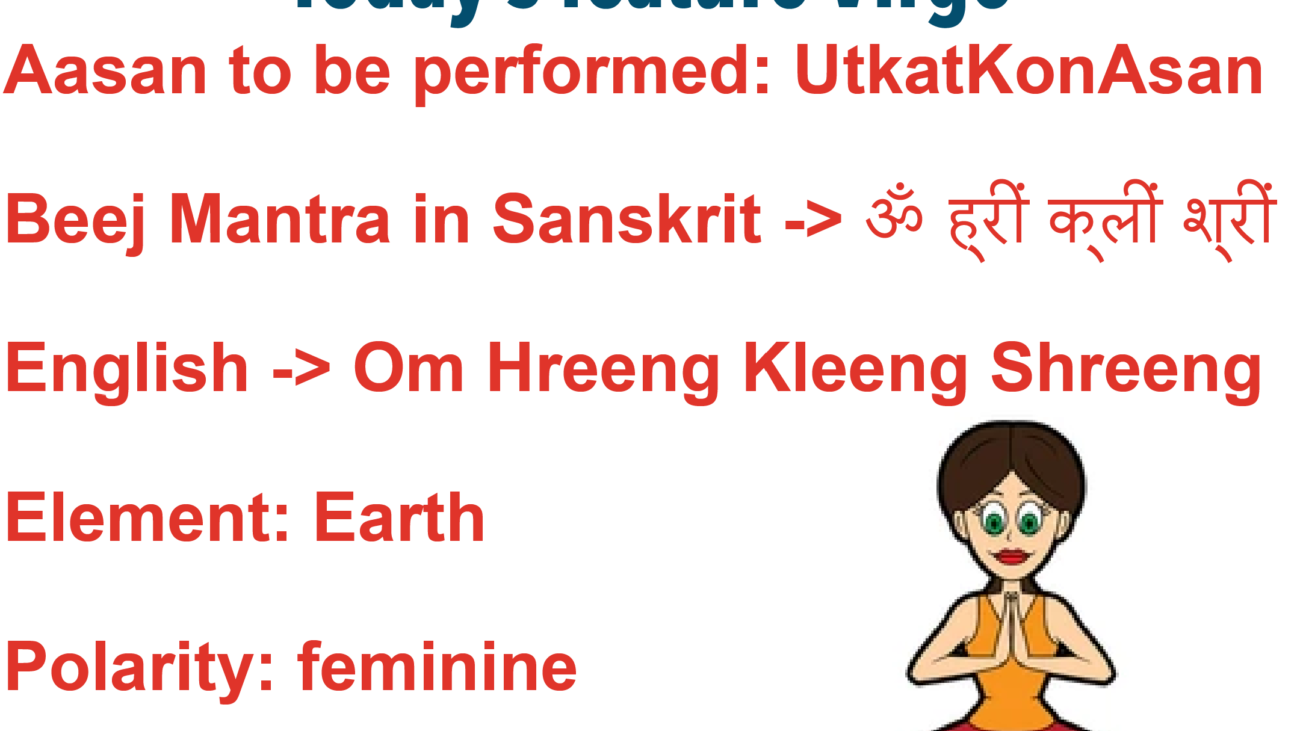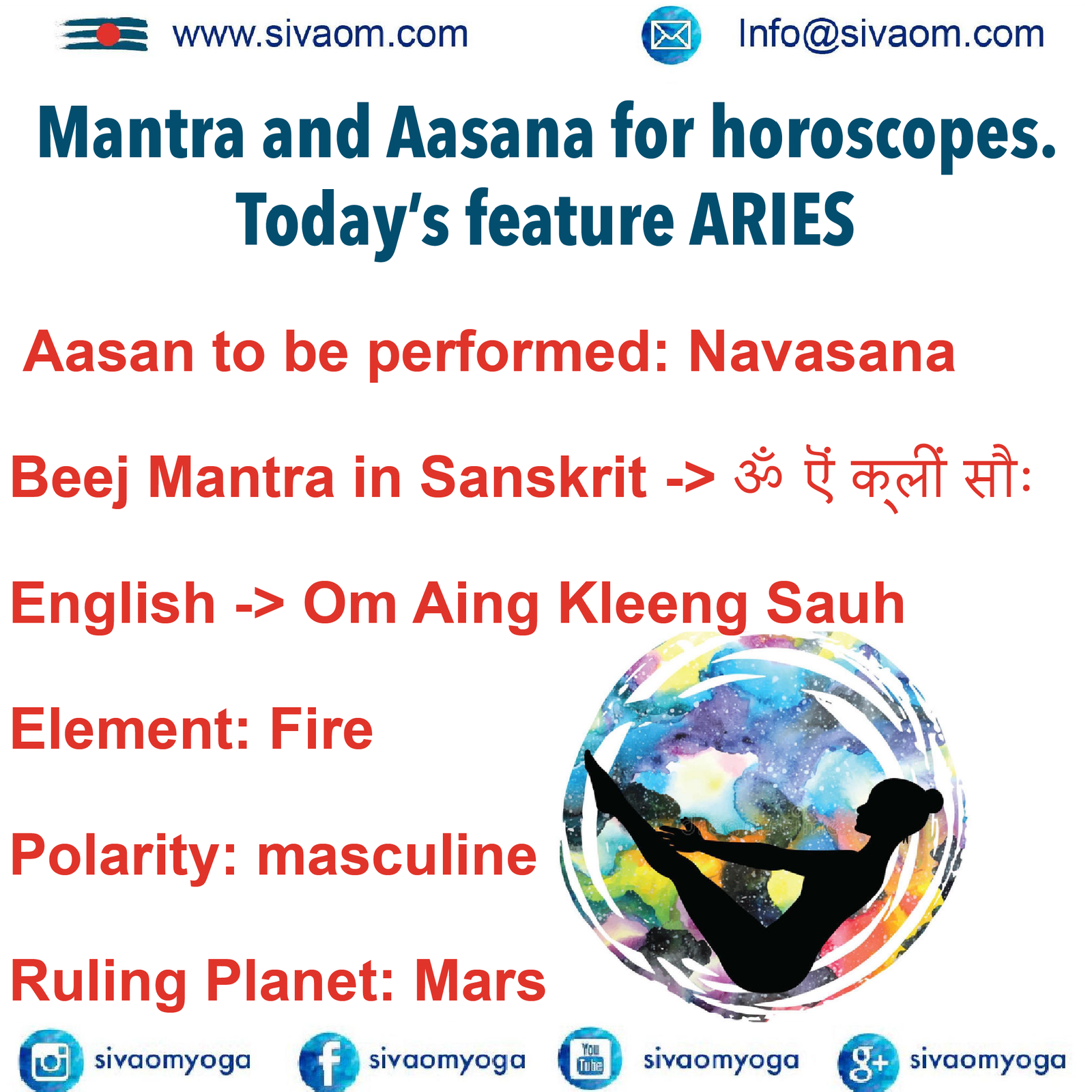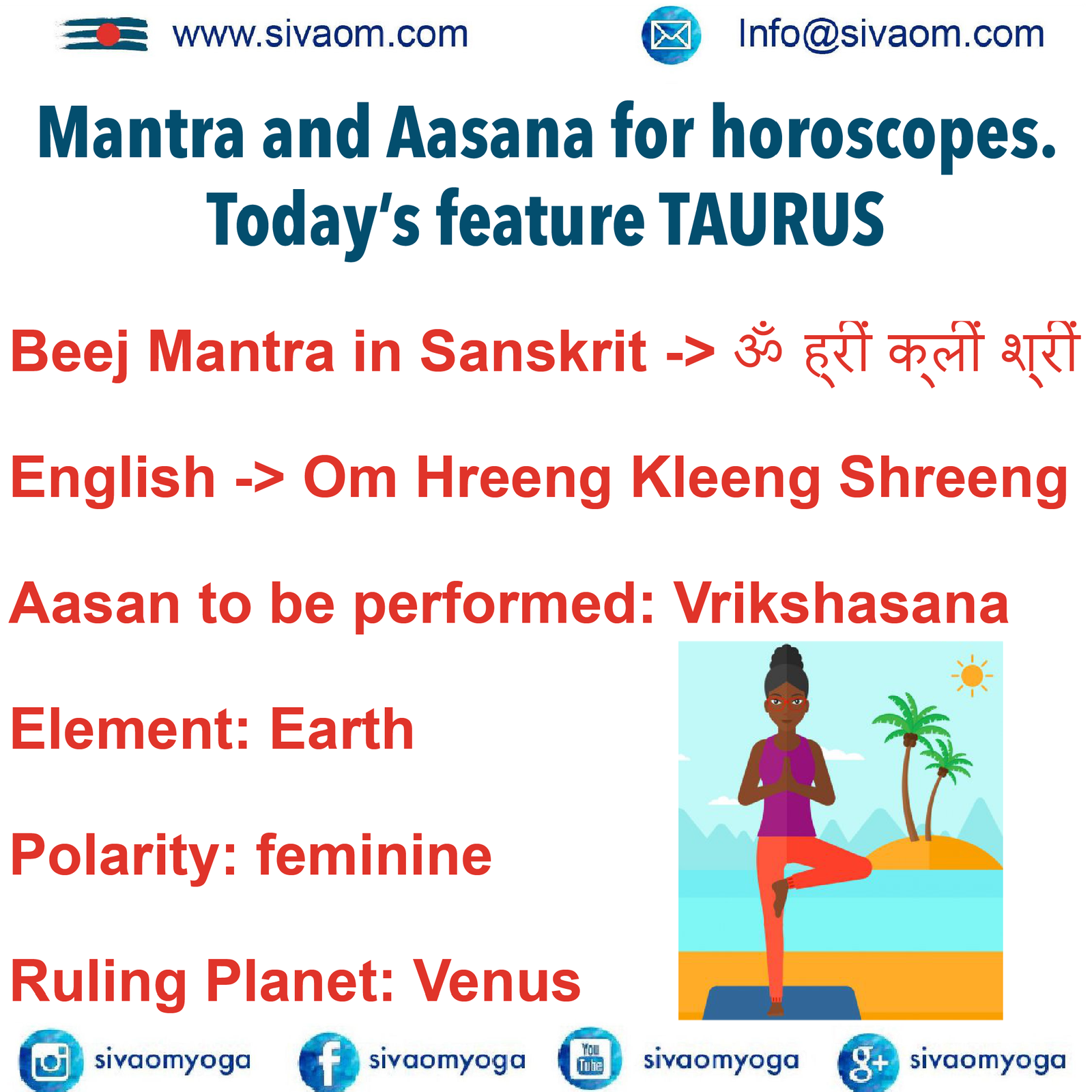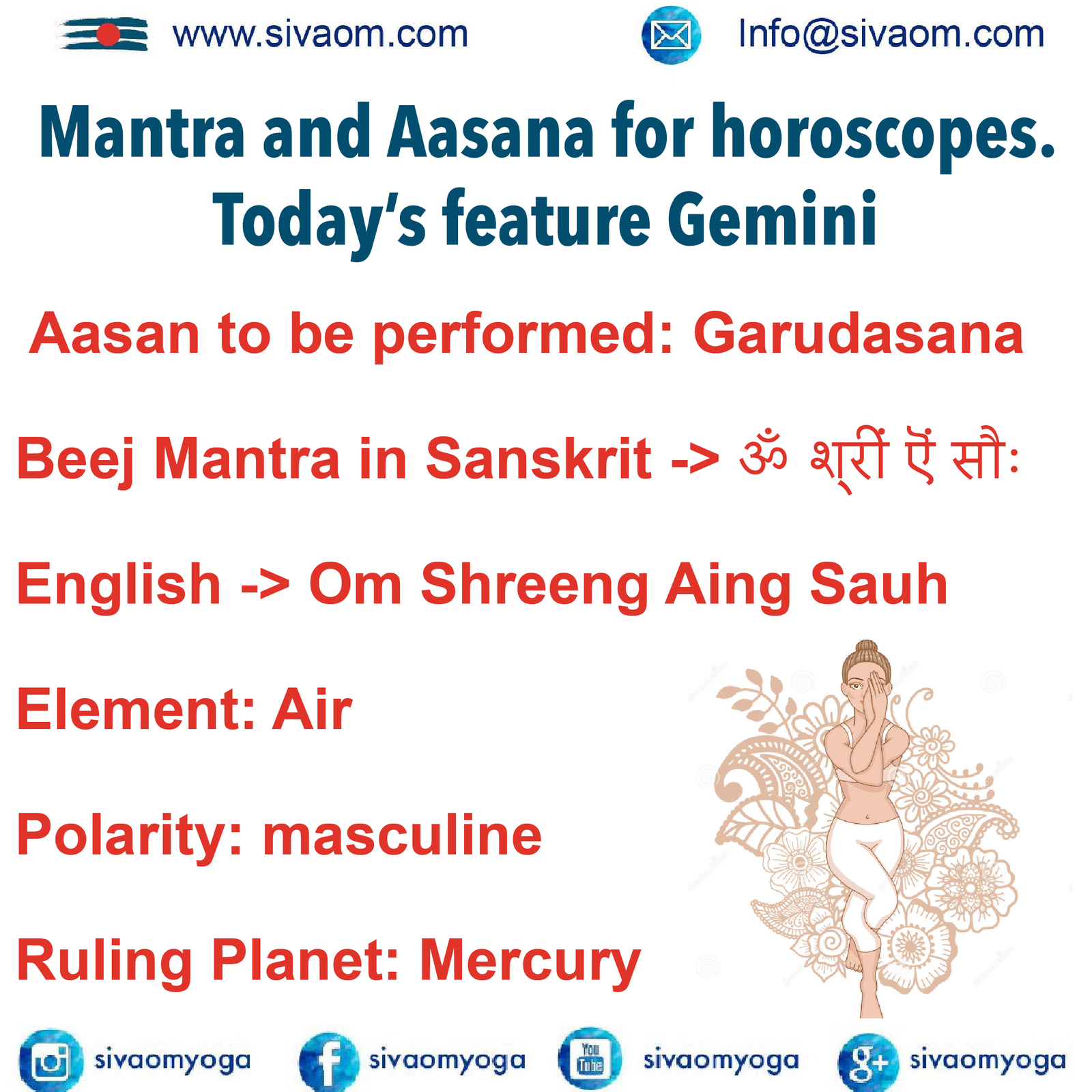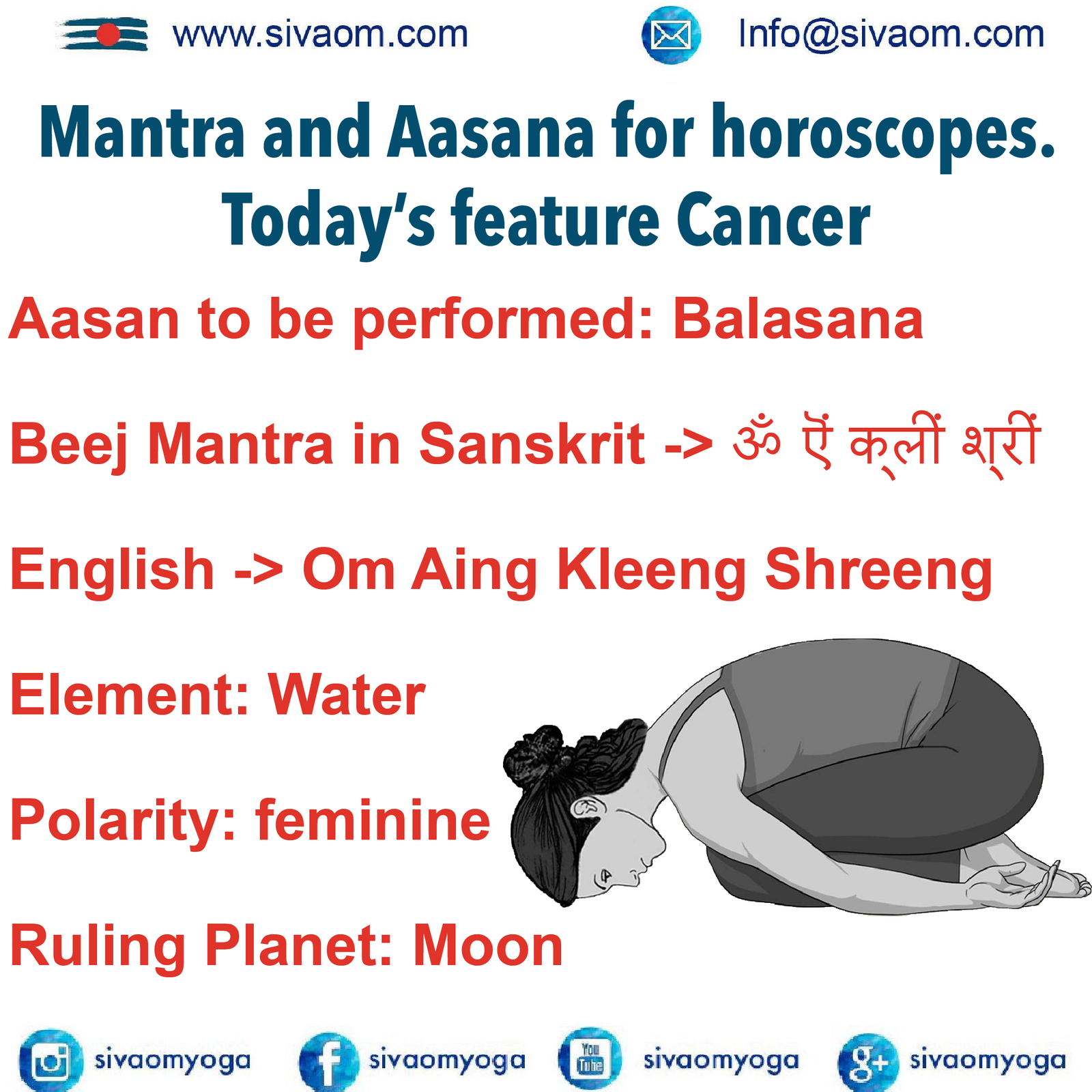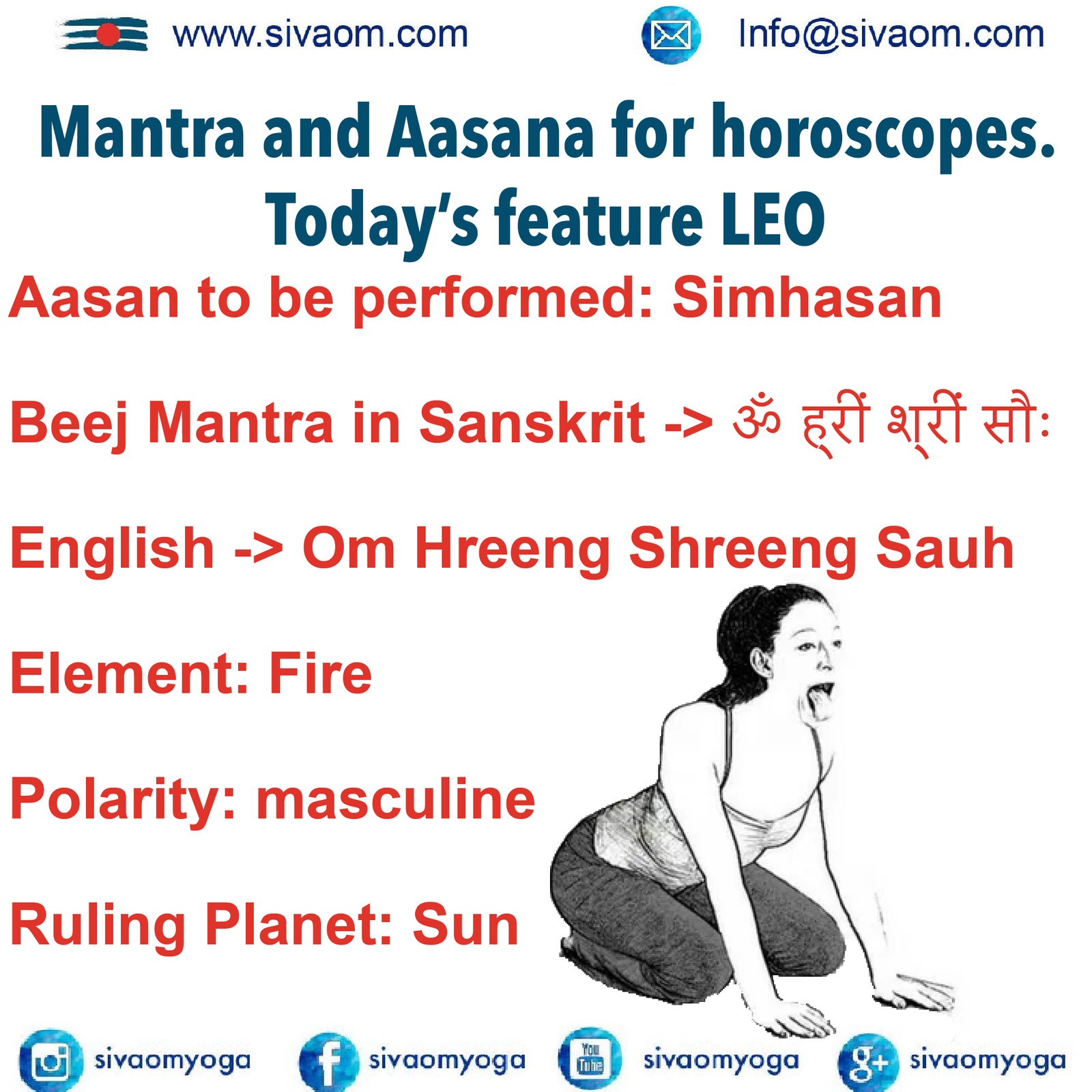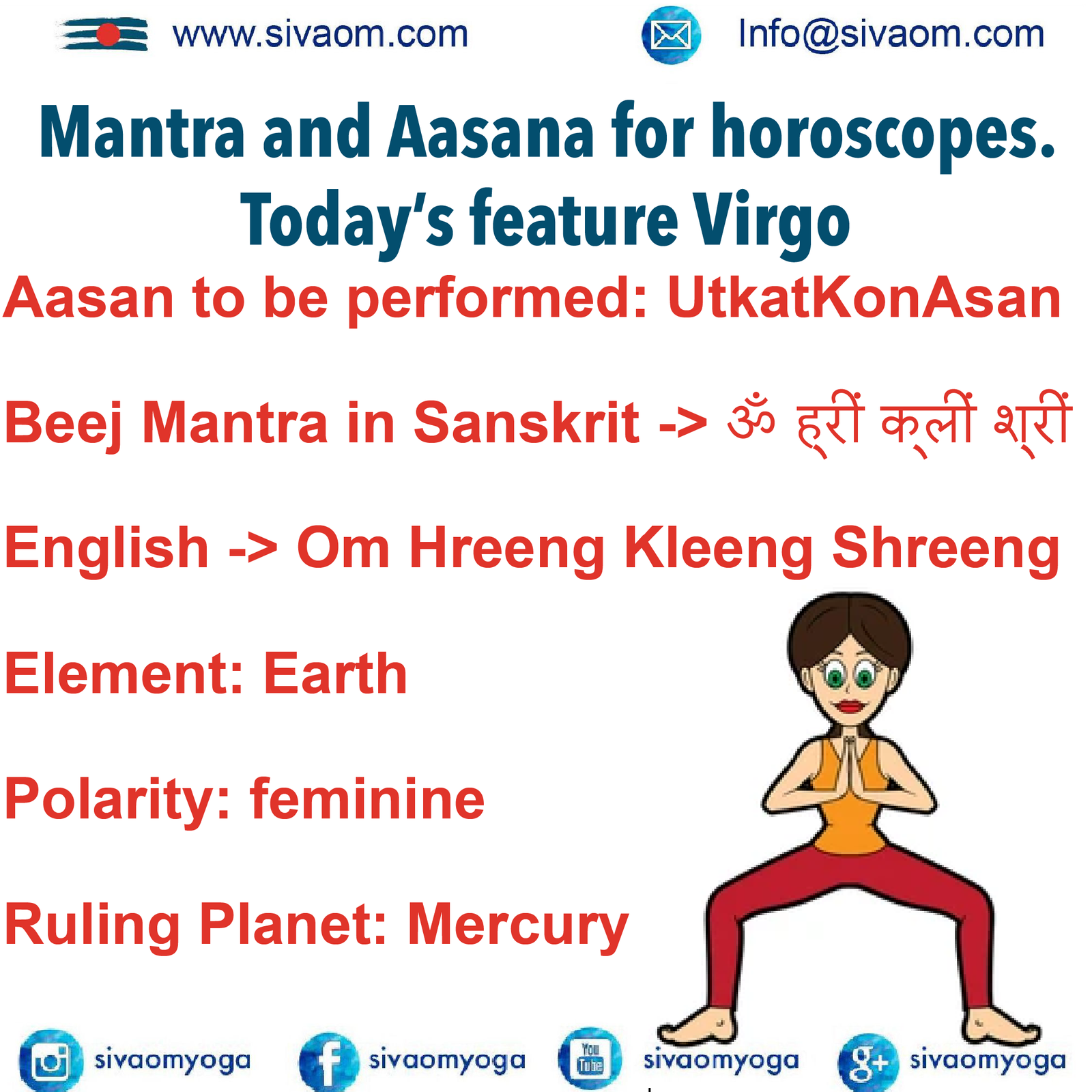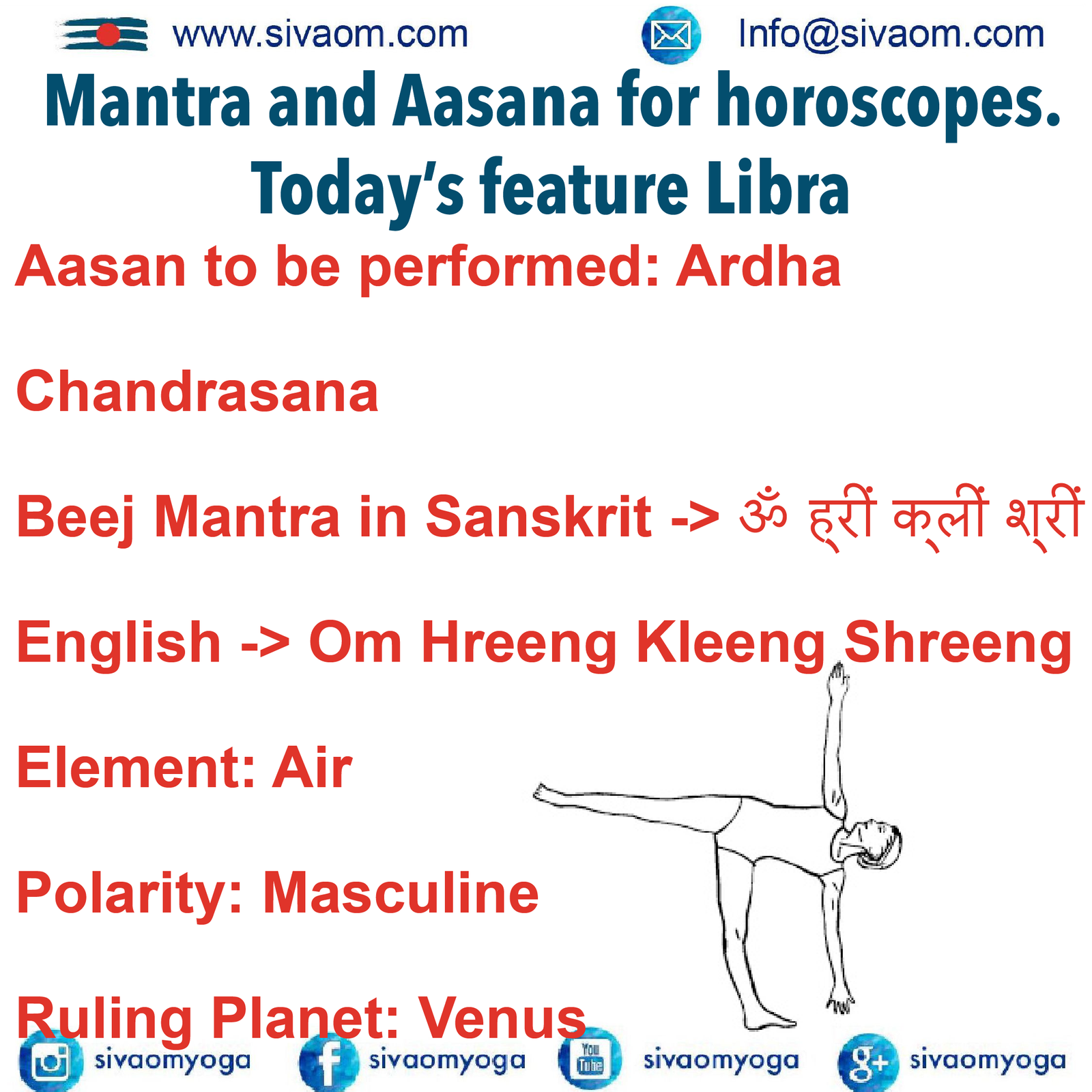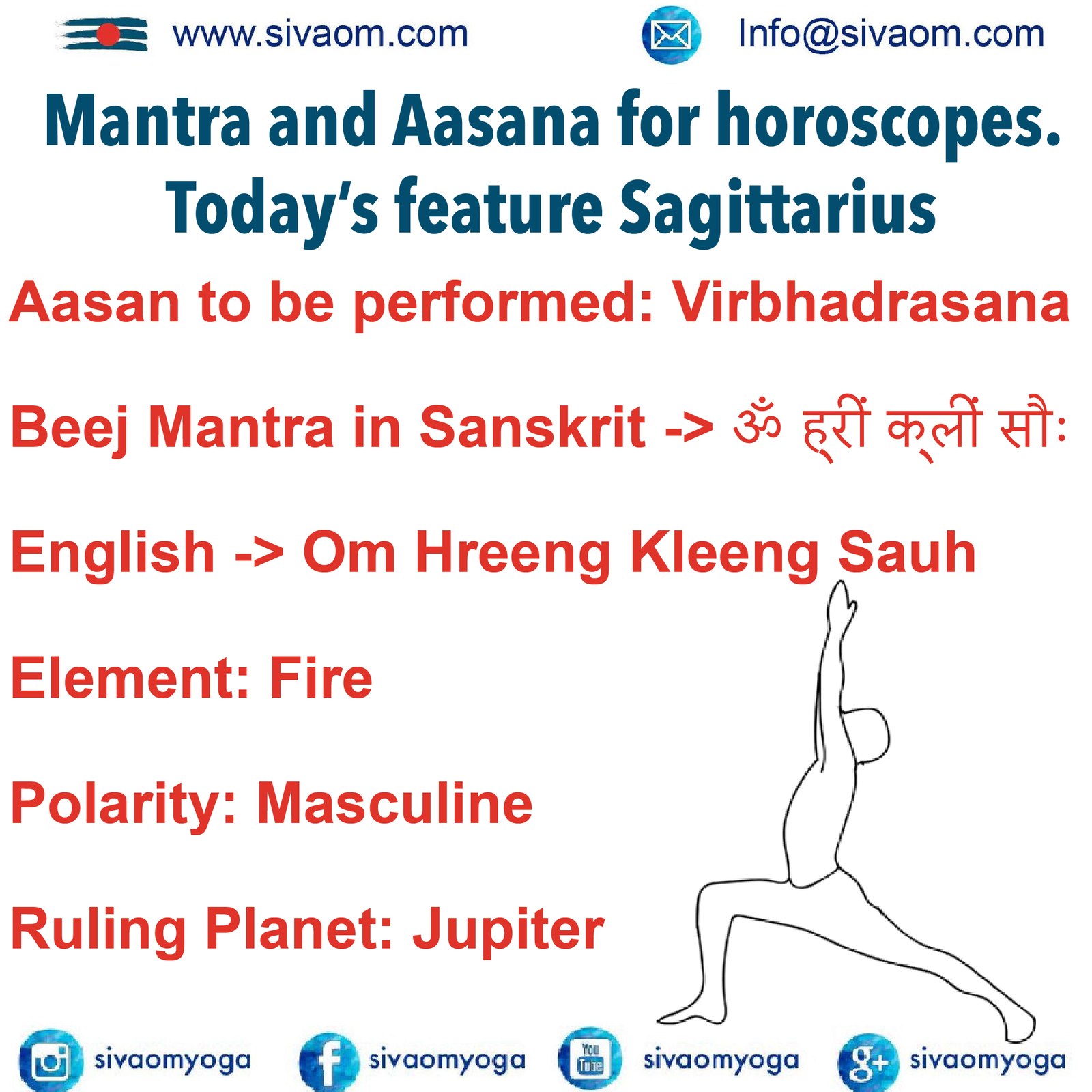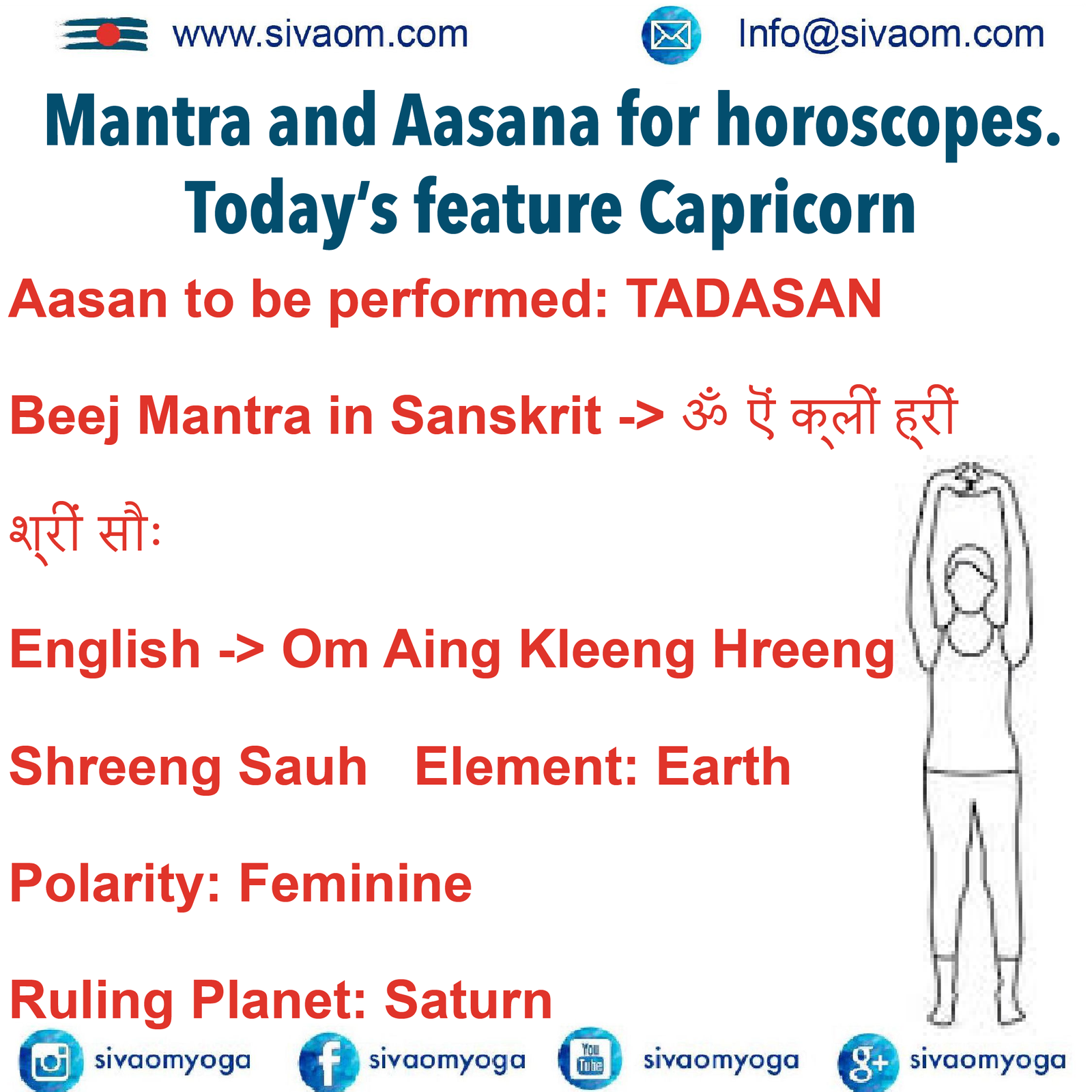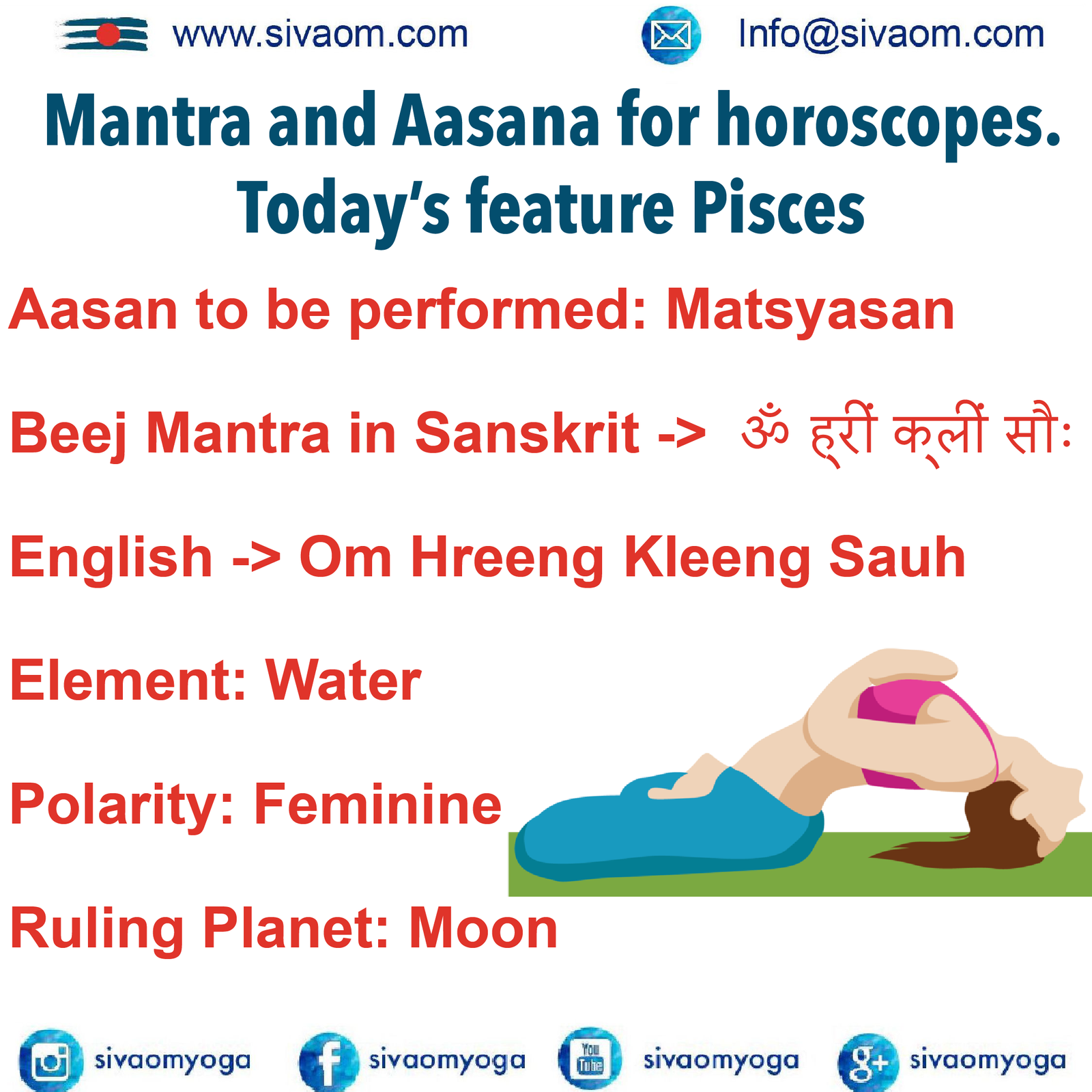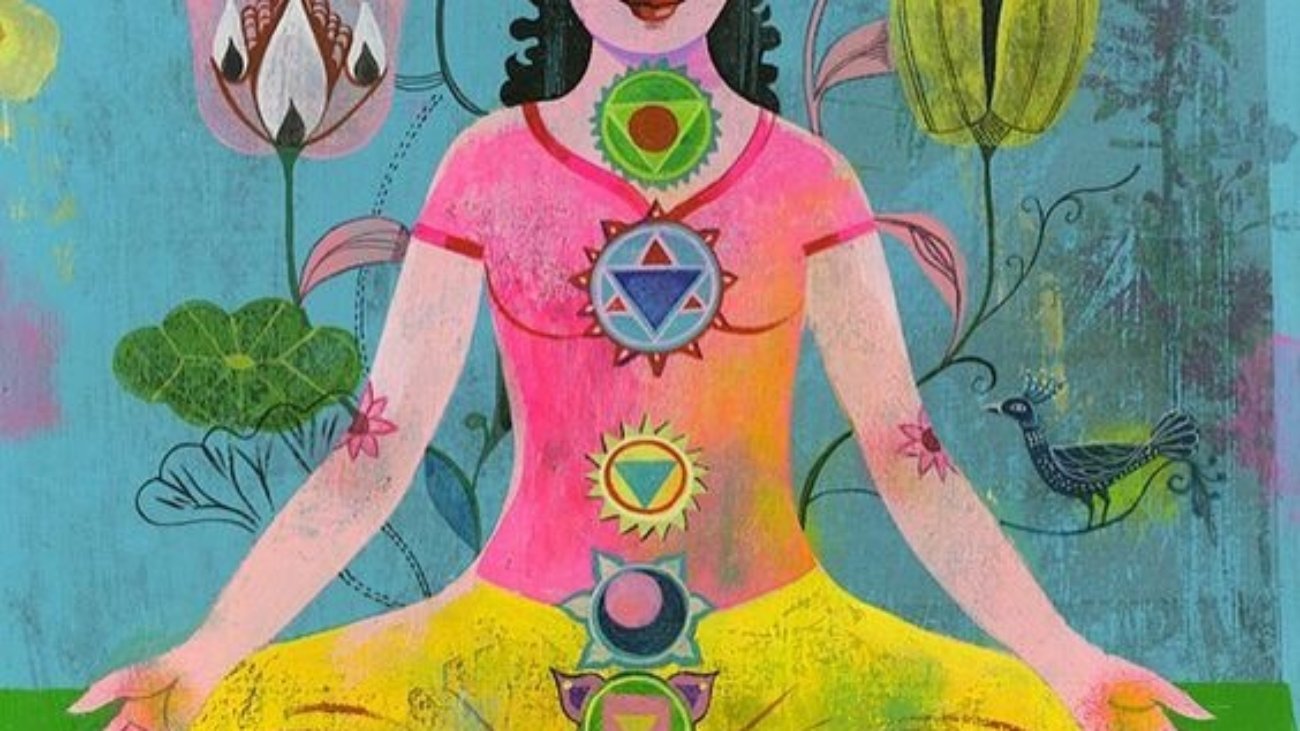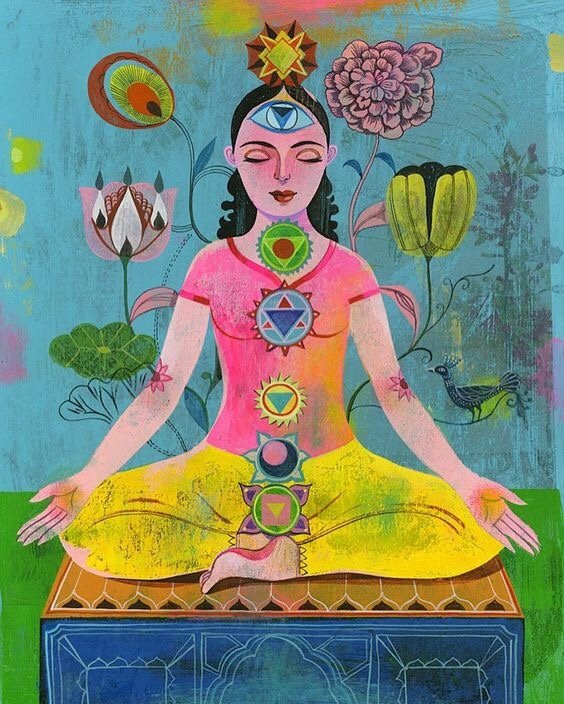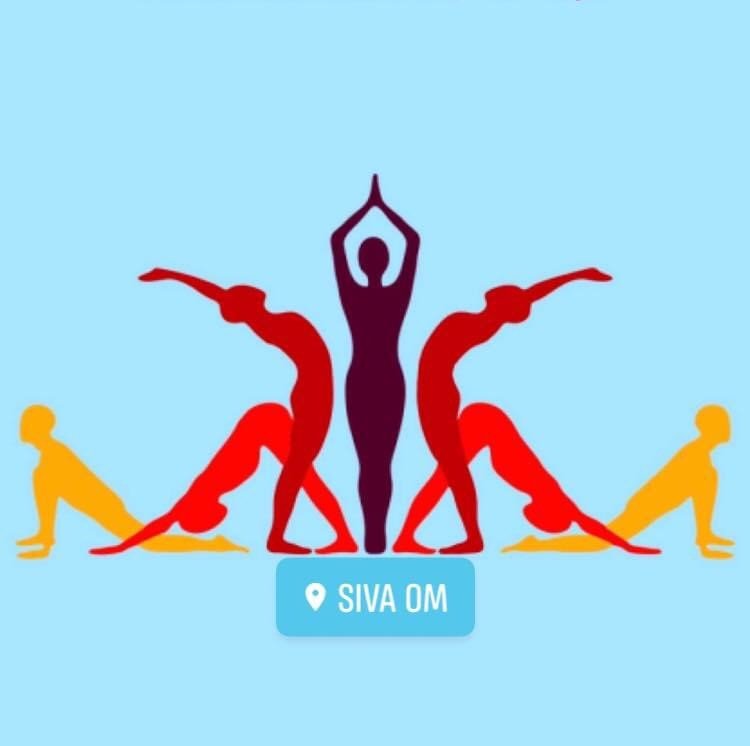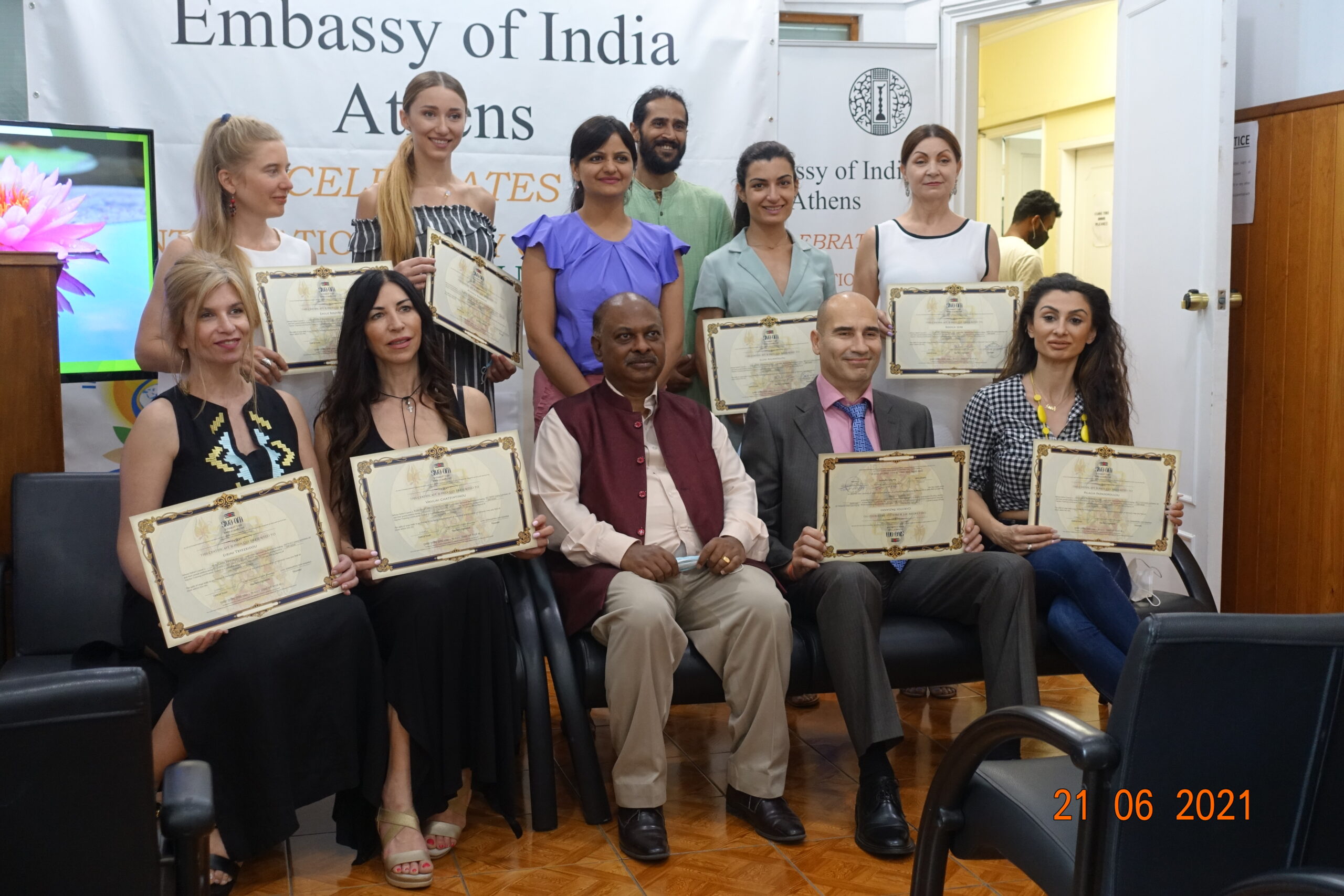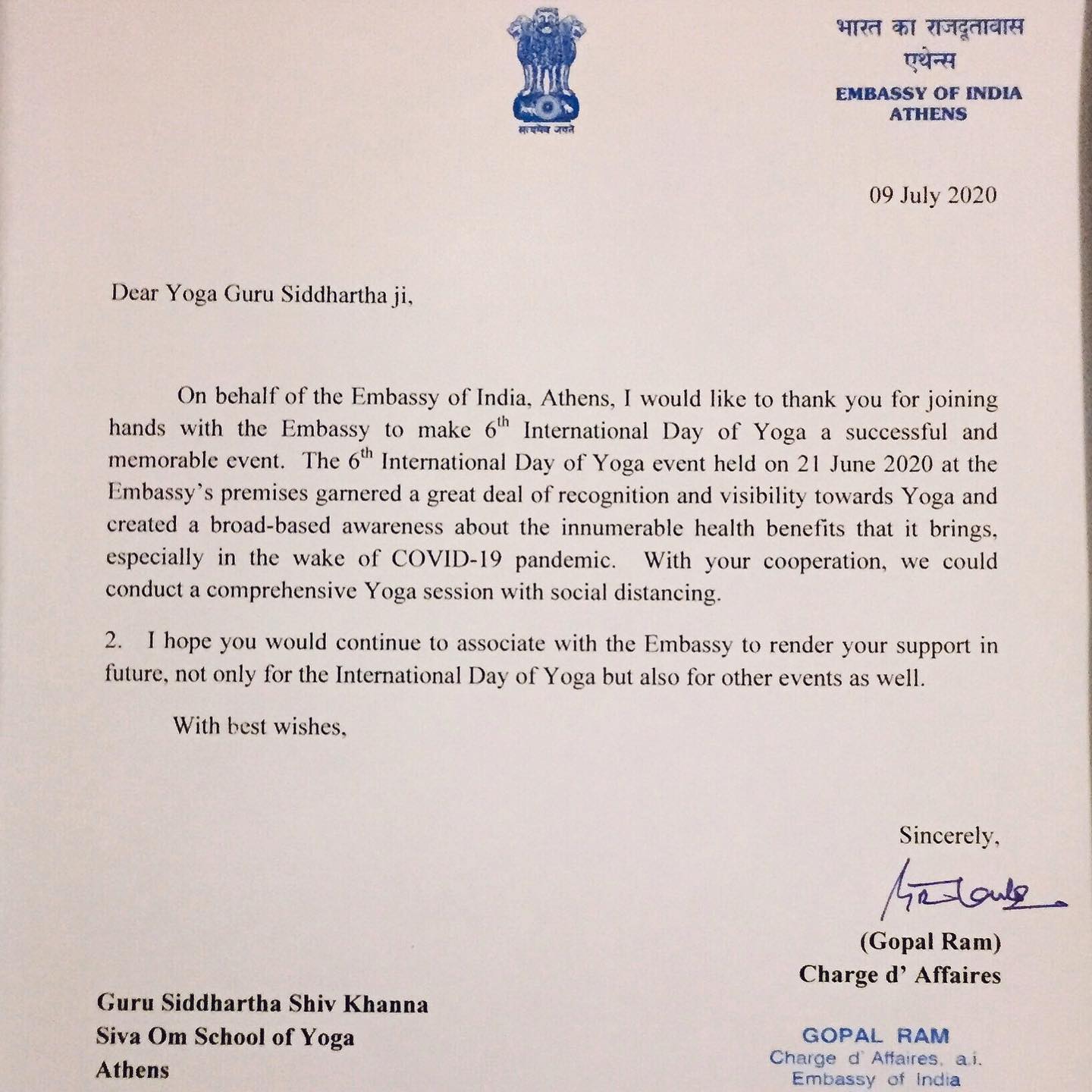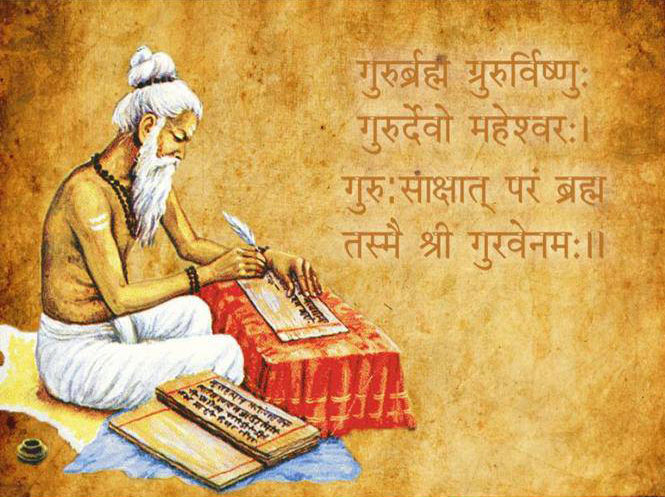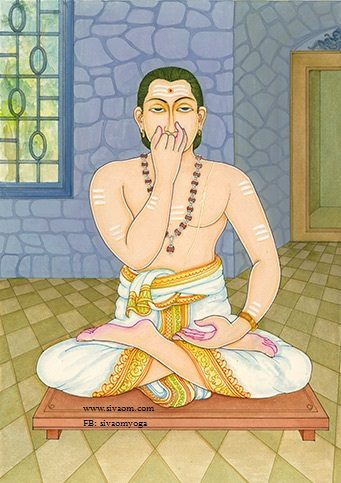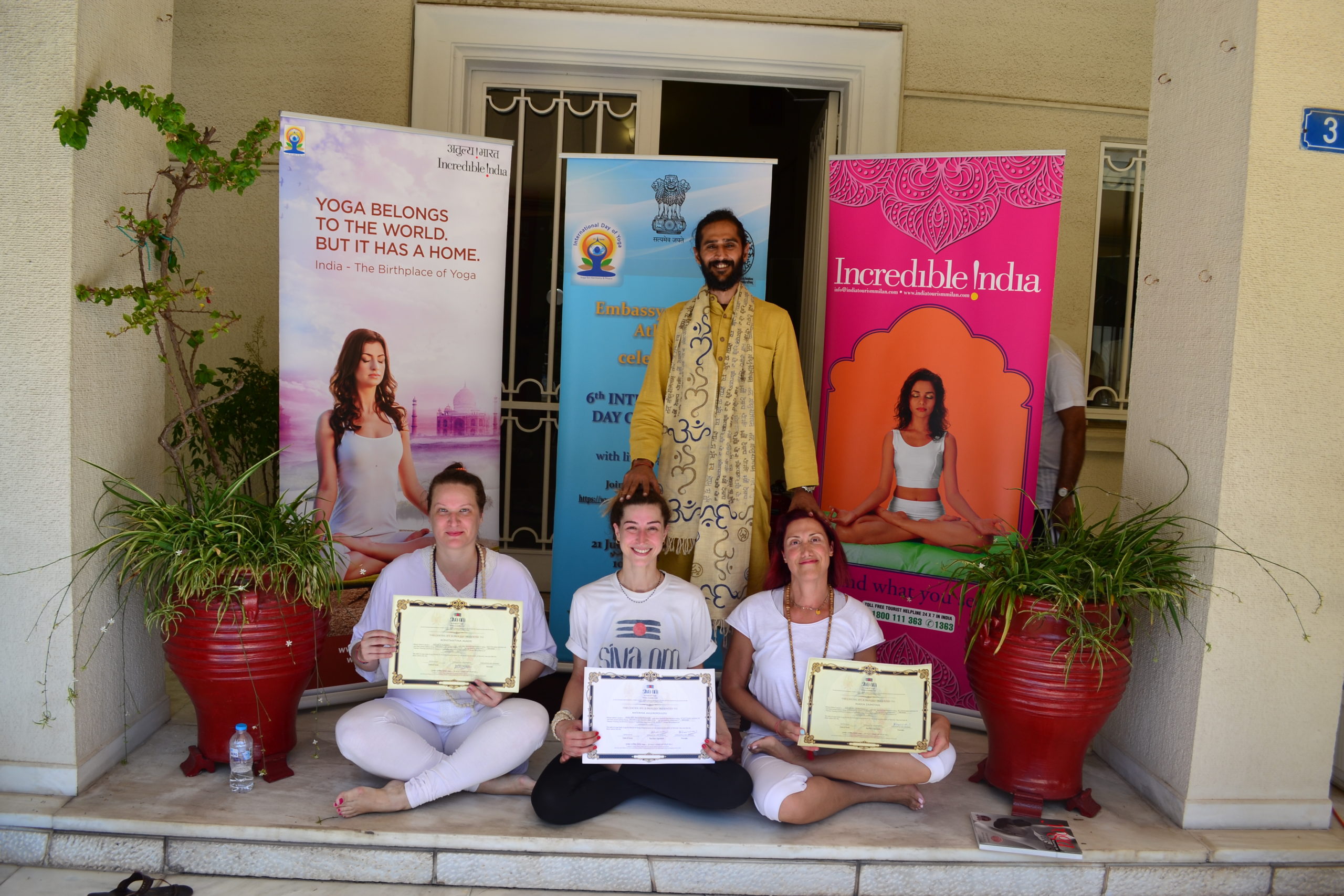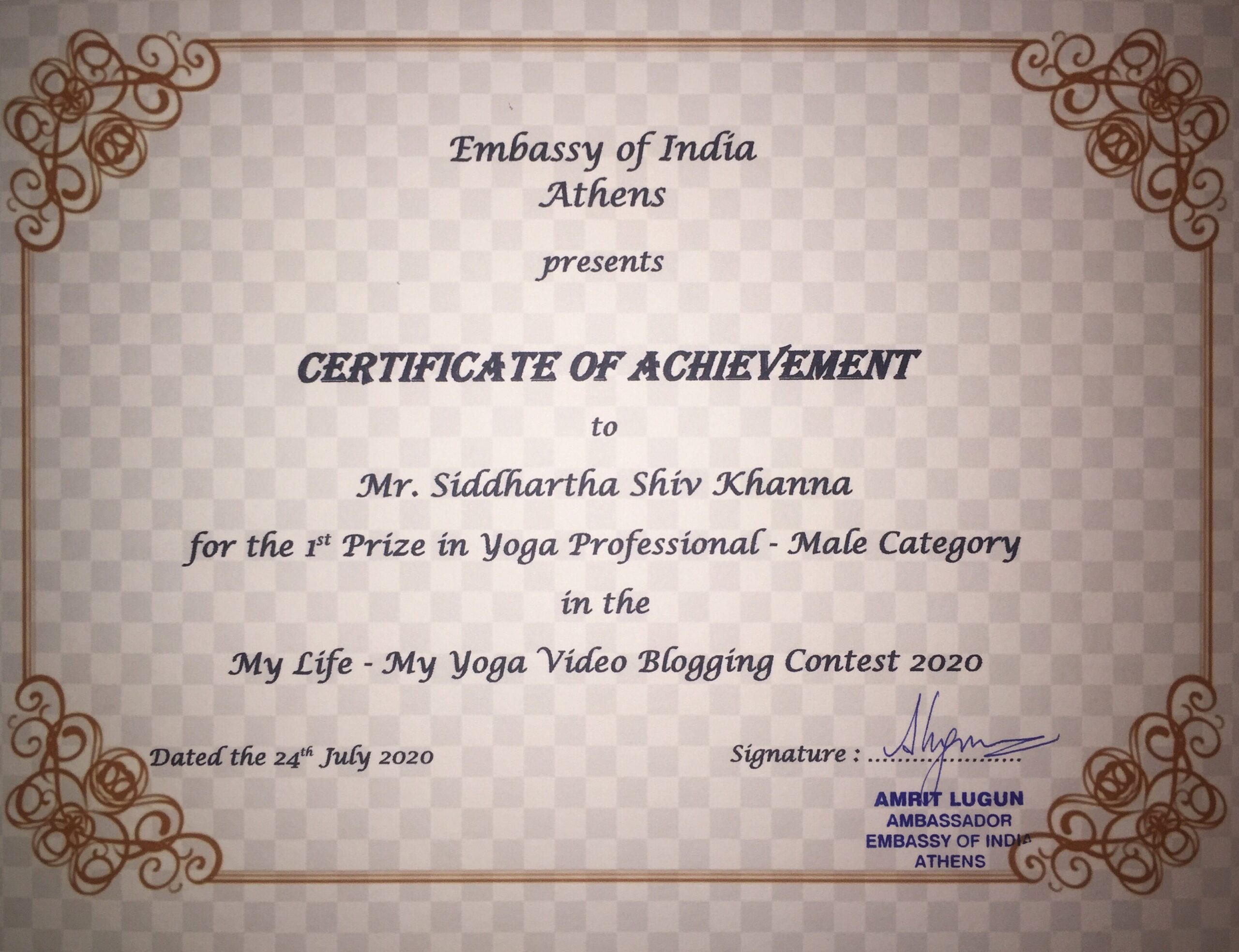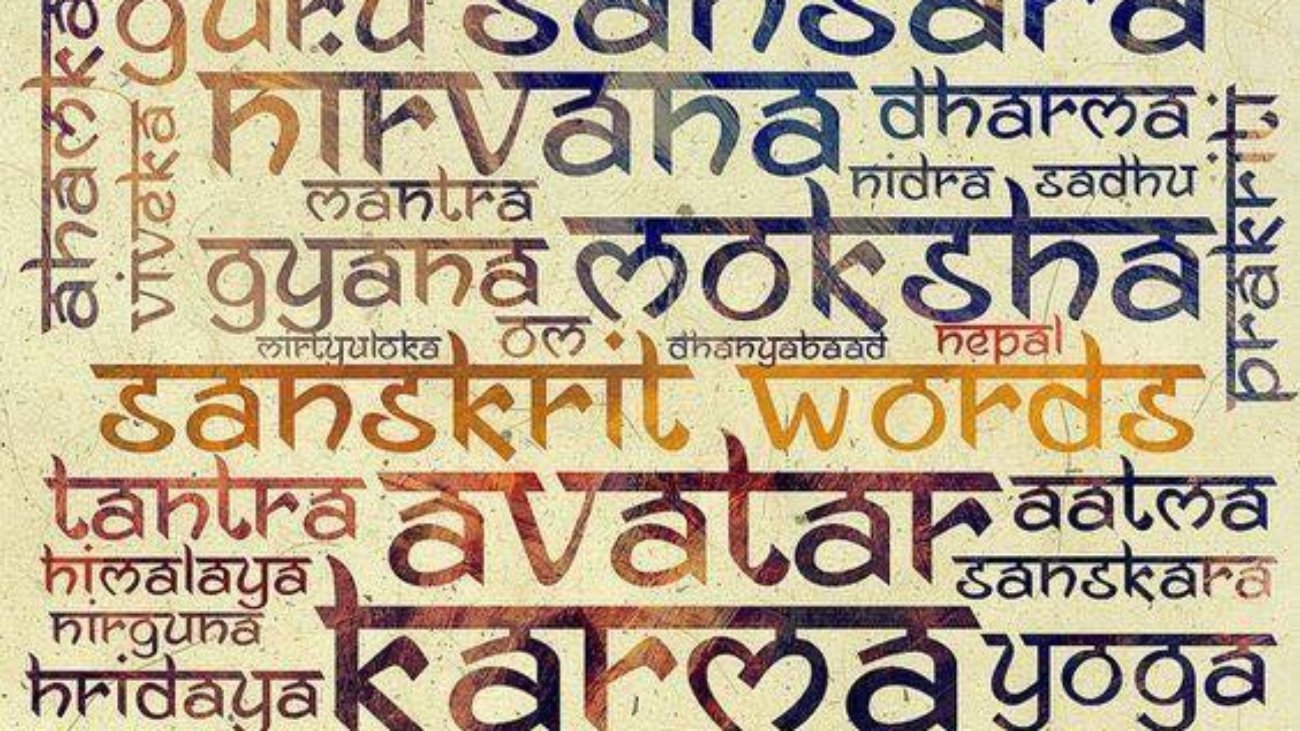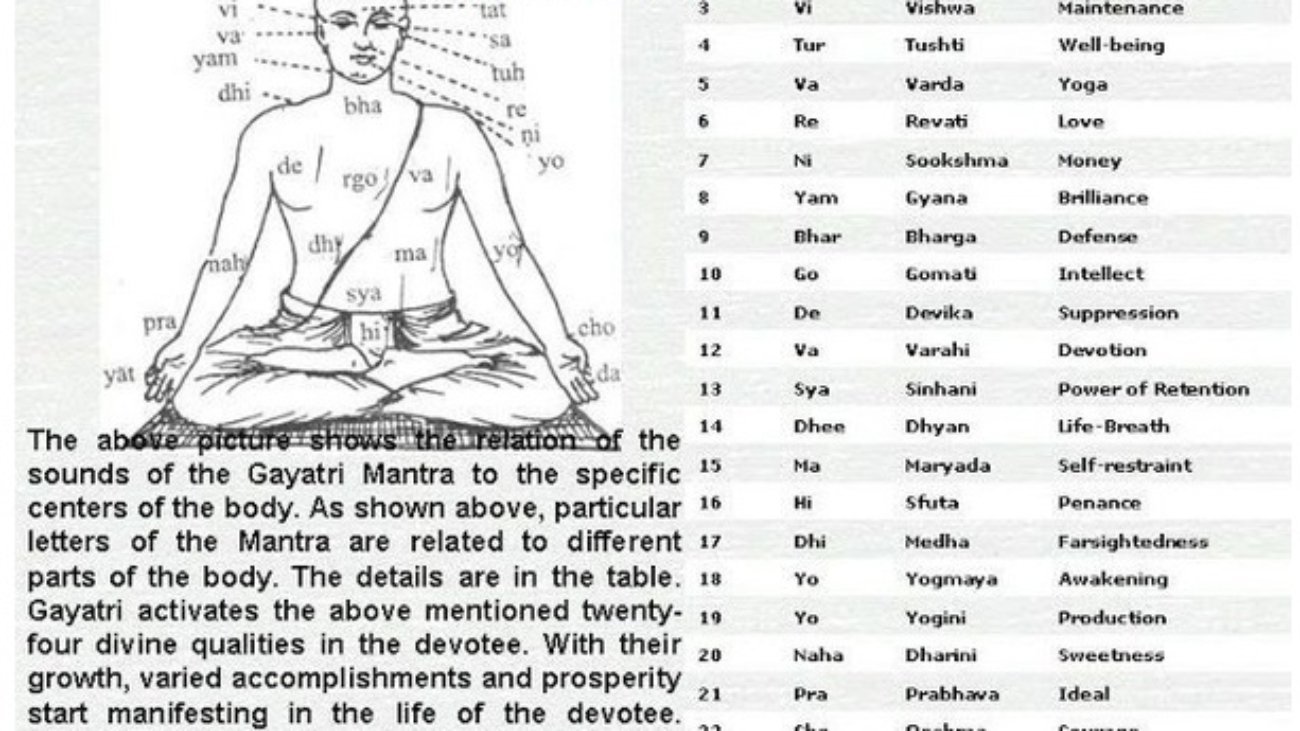The Gayatri mantra is considered one of the most universal of all mantras, it is also considered as one of the top 3 most supreme mantra (Maha Mantra), invoking the universal Brahman as the principle of knowledge and the illumination of the primordial Sun. The mantra is extracted from the 10th verse of Hymn 62 in Book III of the Rig Veda.
ॐ भूर्भुवस्व: | तत्सवितुर्वरेण्यम् | भर्गो देवस्य धीमहि | धियो यो न: प्रचोदयात्
Oṁ Bhūrbhuvaswaha Tatsaviturvarenyam bhargo devasya dhīmahi dhiyo yo naḥa prachodayāt,
A basic translation can be given as…
Oh parmatma, the Protector, the basis of all life, Who is self-existent, Who is free from all pains and Whose contact frees the soul from all troubles, Who pervades the Universe and sustains all, the Creator and Energizer of the whole Universe, the Giver of happiness, Who is worthy of acceptance, the most excellent, Who is Pure and the Purifier of all, let us embrace that very parmatma, so that He may direct our mental faculties in the right direction. Let us meditate on that excellent glory of the divine Light (Vivifier, Sun). May he stimulate our understandings (knowledge, intellectual illumination).
(A quick note of caution, The Gayatri Mantra, honoring the sun, is from Rig Veda. One must never chant it after sunset. Also, singing it in just any tune as devotional singers are doing nowadays is an absolute no- no. )
The Four Parts of the Gayatri Mantra
Aum Bhur Bhuvah Swah (ॐ भूर्भुव: स्व:)
1. AUM (ॐ)
the Supreme name of parmatma. A full explanation of this has been given in a related article.
BHUR BHUVAH SWAH. These three words collectively are known as the “Mahavyahriti”. They express the nature of parmatma, and demonstrate his inherent qualities.
2. BHUR (भूर्)
Firstly, the word Bhur implies existence. parmatma is self-existent and independent of all. He is eternal and unchanging. Without beginning and without end, parmatma exists as a continuous, permanent, constant entity. Secondly, the word Bhur can also mean the Earth, on which we are born and sustained. parmatma is the provider of all, and it is through His divine will that we our blessed with all that we require to maintain us through our lives. Finally, Bhur signifies Prana, or life (literally, breath). parmatma is That which gives life to all. Whilst He is independent of all, all are dependent on Him. It is parmatma who has given us life, parmatma who maintains us throughout our lives, and parmatma alone who has the ability to take away our life, when He so chooses. The only permanent entity, all others are subject to His own will
3. BHUVAH (भुव:)
Bhuvah describes the absolute Consciousness of parmatma. parmatma is self-Conscious as well as being Conscious of all else, and thus is able to control and govern the Universe. Also, the word Bhuvah relates to God’s relationship with the celestial world. It denotes parmatma greatness – greater than the sky and space, He is boundless and unlimited. Finally, Bhuvah is also indicative of parmatma role as the remover of all pain and sufferings (Apaana). We see pain and sorrow all around us. However, through supplication to parmatma, we can be freed from that pain and hardship. parmatma Himself is devoid of any pain. Though He is Conscious of all, and is thus aware of pain, it does not affect Him. It is our own ignorance that makes us susceptible to the effects of Maya, or illusion, which causes us to feel pain. Through true devotion to parmatma, we can be freed from the clutches of Maya, and thus be rid of pain and sorrow.
4. SWAH (स्व:)
Swah indicates the all-pervading nature of parmatma. He is omnipresent and pervades the entire multi-formed Universe. Without Form Himself, He is able to manifest Himself through the medium of the physical world, and is thus present in each and every physical entity. In this way, parmatma is able to interact with the Universe created by Him, and thus sustain and control it, ensuring its smooth and proper running and function.
Also, Swah symbolizes parmatma bliss. All but God experience pain, suffering and sorrow. Devoid of all such things, parmatma alone is able to experience supreme bliss. Happiness as experienced by humans is temporary, a transient state of mental satisfaction, which soon dissolves back into the mire of worldly troubles. Perfect, and without any form of deficiency, parmatma alone experiences true bliss, permanent and unaffected by worldly pains and woes. One who realizes parmatma is able to join in this bliss, and thus God is able to impart true happiness to those who establish oneness with that Supreme Divinity.
5. TAT (तत् s.1)
Literally, this word means “that”, being used in Sanskrit to denote the third person. It is also mentioned in the Bhagavad Gita by Sri Krishna Himself, where He implies the selfless nature of the word. Being used in the third person, the word has implicit in it an idea of selflessness. Sri Krishna uses it to imply the selfless nature of charity (charity, or a gift, being used as an analogy for worship, in the form of action, implying that action should be preformed without regard to its fruits, but simply out of devotion and sense of duty, or Dharma). Tat then is used here in the Gayatri Mantra to indicate that the worshipper is referring to [that] parmatma, and that the praise being offered to parmatma in the prayer is purely directed towards Him, without thought of gaining any personal benefit from that praise.
6. SA-VI-TUR (सवितुर् s.2-4)
Savita, from which Savitur is derived, is another name of parmatma, this being the reason that the Gayatri Mantra is often known as the Savitri Mantra. The implication of Savita is of parmatma status as the fountain, the source of all things. It is through His Divine Grace that the Universe exists, and so this word sums up the Mahavyahriti, by describing parmatma ability to create the Universe and sustain it, as well as, at the right time, bring about its dissolution.
Savita is also indicative of parmatma gift to mankind. Humans also have, in limited amount, the power, or shakti, of Savita. This shakti acts as an impetus in humans, and brings about the requirement for them to do something. They cannot sit idle, and are constantly searching for something to do. This is what is commonly known as the “creative urge”. It is through this shakti that mankind has created art, and it is through this shakti also that scientific advances are made. The gift of Savita also gives creatures the ability of procreation. Hence, Savita can be thought of as meaning Father (or Mother) also.
Finally, it is the power of Savita that enables mankind to distinguish right from wrong, and vice from virtue. Through this ability, we are able to in some part direct our own selves, and thus, Savita imparts to us a certain self-guiding ability. Thus, by using this word in the mantra, we demonstrate that we are making efforts ourselves also, since parmatma will not help us unless we are willing to help ourselves.
7. VA-RE-NY-AM (वरेण्यं s.5-8)
Varenyam signifies our acceptance of parmatma, and can be translated as meaning “Who is worthy”. Ever ready to obtain all the material riches of the world, more often than not, they are a disappointment once they have been achieved. parmatma however is the one who, once realized and achieved, has the ability to truly satisfy. We therefore accept Him as the Highest reality, and it is to Him that we dedicate our efforts.
Varenyam can also be interpreted as signifying one who is eligible. We have chosen Him to be our Leader and our Guide. We place our all into His hands, and accept Him regardless of anything else. We place no conditions on this acceptance, as it is all out of sheer devotion.
This triplet is a further description of the attributes and qualities of parmatma – His functional and instrumental qualities, rather than intrinsic qualities – and through those qualities, His relationship to us.
8. BHAR-GO (भर्गो s.1,2)
Bhargo is taken to signify the Glorious Light that is parmatma love and power. It indicates His complete purity – being absolutely pure Himself, God also has the ability to purify those that come into contact with Him. Thus, Bhargo is indicative of parmatma power to purify, and to destroy all sins and afflictions. In the same way as a metal ore placed into a fire will yield the pure metal, by merging with parmatma, by realizing His Divine Form and establishing unity and oneness with Him, we can cleanse ourselves and be made pure by His Grace.
Though the soul, being itself Divine in nature, possesses that Light, it lacks luster, having been made impure by the sins and vices, which are a result of the darkness of Maya. By removing the veil of Maya, and cleansing our soul, parmatma can enable the soul to realize its true, Divine self, and thus purify it.
9. DE-VAS-YA (देवस्य s.3-5)
The word Deva, from which this word is derived, has been translated by different people in many different ways. It is generally thought of as meaning simply “parmatma”. However, its meaning is more complex than that.
Deva, which forms the root of the words “Devata” and “Devi”, means “quality” or “attribute”, and can be thought of as another word for “Guna”. Thus, the various forms of parmatma are given this name, as each of those forms is related to a specific quality and function (for example, Brahma has the quality of Creation, Kamadeva has the quality of love, etc.). Also, Deva is thus used to describe anyone who is considered to possess a special quality.
Since Deva is symbolic of the individual qualities of parmatma, the word demonstrates the inherent oneness of those different Forms, and thus the use of this word can be taken as describing the fundamental unity of parmatma. Thus we see that here, we reaffirm that central belief in the Hindu Dharma that “Ekam sat viprah bahudah vadanti” (Truth, or parmatma, is one, but wise men call Him/It by different names).
Thus, Deva is indicative of the various multifaceted entity that is the absolute Personality of parmatma. It describes in one word all the functions, roles and different attributes of parmatma, and symbolizes therefore his absolutely essential nature – without parmatma, nothing can exist.
10. DHI-MA-HI (धीमहि s.6-8)
Meaning to meditate and focus our mind on parmatma. Meditation on parmatma implies that we remove all other thoughts from our mind, since thoughts of the world render our mind impure, and thus we are unable to conceptualize the absolute purity of parmatma. We must be able to concentrate, and direct our mental energies towards the task in hand – which is communion with parmatma.
Goddess Gayatri
DHIYO YO NAH PRACHODAYAT (धीयो यो न: प्रचोदयात्)
Prayer is carried out for four main reasons:
to praise and glorify parmatma;
to thank parmatma;
to ask forgiveness from parmatma;
or to make a request from parmatma.
Having carried out the other three parts (praise of His greatness, thanks for His generosity in Creation and maintaining us through our lives, and forgiveness by demonstrating our awareness of our own impurity, which we have realized is present and must be cleansed through contact with parmatma), this part is now our request from parmatma. Since our soul is the Light of Life within us, and that acts on our body via the medium of the brain, we ask parmatma to make this contact pure and righteous. The soul is of course inherently pure, being itself Divine in nature. The body is under the complete control of the mind. The link is the mind, which is affected not only by the soul, but also the outside world. We ask in these four words that parmatma help us to improve our intellect, and guide it towards what is right.
11. DHI-YO (धीयो s.1,2)
Sanskrit for “intellect”, this is the essence of this part of the Gayatri Mantra. Having firmly set parmatma in our hearts, we now must try to emphasize His presence and influence on our mind and intellect.
Material prosperity holds no true meaning for the person who is truly devoted to God. Pain and suffering are of no consequence to him as, touched by parmatma, he is imbued with parmatma own Divine Bliss, and all worldly sorrows pale to nothingness in comparison. However, still the individual must live in the world. Thus, it is important that the person’s intellect remains focussed on serving parmatma, and that it is able, through the medium of the body, to serve parmatma to the best of its ability.
Physical objects can be obtained very easily, if one is intelligent enough to know how to go about it. Intellect however cannot be obtained, but must be there from the very first. It is by use of this intellect, in fact, that one is able to cultivate all other qualities (building of wealth, “success” in life (in material terms), physical fitness, etc.) Thus, intellect is the key to all else in life, and as such, it is the most important possession. We ask parmatma in the Gayatri Mantra to gift us with the highest intellect, and to help us by showing us the way to use that intellect.
12. YO (यो s.3)
Meaning “Who” or “That”, Yo signifies yet again that it is not to anyone else that we direct these prayers, but to parmatma alone. Only parmatma is worthy of the highest adoration, only parmatma is perfect and free from all defects. It is That parmatma to Whom we offer these prayers.
13. NAH (न: s.4)
Nah means “Ours”, and signifies the selflessness of the request we make of parmatma in this part of the Gayatri Mantra. We offer this prayer, and make the request of parmatma, not simply for ourselves, but for the whole of humanity. We seek the uplift of the whole of society. Hindu philosophy has since the beginning recognized the concept of “Vasudhaiva Kutumbakam” – “The whole world is one big family”. Thus, we pray not only for ourselves, but for each and every member of that great family, that we may all benefit from the greatness and generosity of the All-loving parmatma.
14. PRA-CHO-DA-YAT (प्रचोदयात् s.5-8)
Prachodayat, the final word of the Gayatri Mantra, rounds off the whole mantra, and completes the request we make of parmatma in this final part. This word is a request from parmatma, in which we ask Him for Guidance, and Inspiration. We ask that, by showing us His Divine and Glorious Light (cf. BHARGO), He remove the darkness of Maya from our paths, that we are able to see the way, and in this manner, we ask Him to direct our energies in the right way, guiding us through the chaos of this world, to find sanctuary in the tranquility and peace of parmatma Himself, the root of all Happiness, and the source of true Bliss.
There are numerous benefits of chanting Gayatri mantra. Thus, here are some of the positive effects of chanting Gayatri Mantra. It increases learning power. It increases concentration. It brings prosperity. It gives people eternal power. It is very useful for peace. It is the first step to go to the way of the spiritual road. It is correlated with God. It strengthens the mind and improves the health condition. It improves the rhythmic pattern of breathing. It keeps our hearts healthy. It protects the devotee from all the dangers and guides towards the Divine by intuition. It improves our family life.

